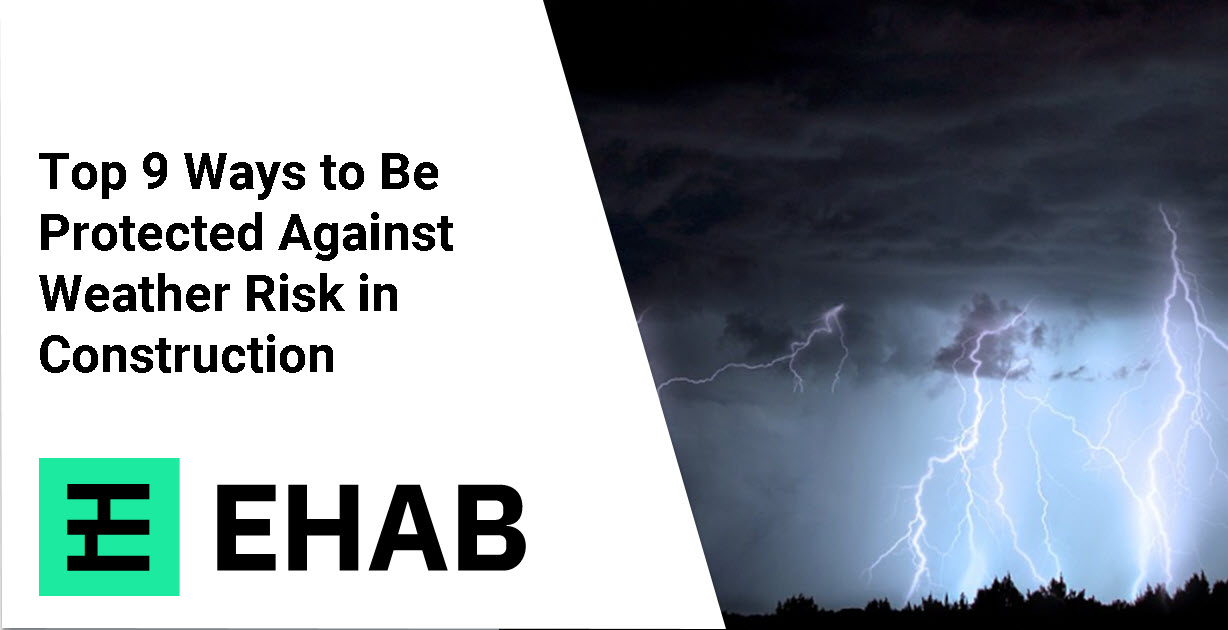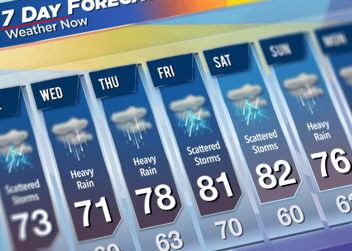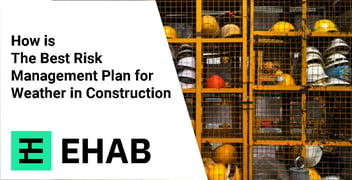As a construction professional, you know there is no escaping the weather and natural elements. It doesn't matter where your construction site is located – construction workers will be exposed to the weather conditions of that region. The result of severe weather ranges from minor annoyances, such as taking extra precautions to protect equipment, to major issues, such as construction delays and even construction accidents.
You can do several things to protect yourself against weather risks in construction. Below are nine ideas drawn from industry experts and construction professionals.
Know the Local Weather and Identify Weather Risks
It is essential to keep up-to-date on local weather forecasts, warnings, and construction risks specific to the locality of your site. This can help you identify potential risks that may arise from extreme weather, such as construction delays or safety issues. There are many sources of weather information in the UK. Some of the most common include weather warnings from the Met Office, construction risk assessments from construction industry bodies, and construction accident statistics from government agencies.

(Image source: metoffice.gov.uk)
If you are new to an area, it is a good idea to seek out local climate experts who may have useful local knowledge that may not be in the public domain. For example, construction professionals who have worked on construction sites in the area may be able to provide valuable insights into risks specific to the region, such as high winds, heavy rain, or seasonal flooding that could cause delays to the construction schedule, water damage, or other safety issues.
Have a Plan
Once apprised of local weather knowledge, you need to make contingency plans for extreme weather events. This will help you reduce the potential impact of construction delays and other issues that may arise due to unpredictable weather.
Some things to consider when making a construction weather risk plan include:
- Investing in quality construction equipment and materials
- Establishing protocols for construction workers to follow
- Developing communication channels with construction workers, suppliers, clients, and other stakeholders
- Incorporating safety training for all construction workers
Take Special Precautions for Identified Weather-related Hazards
Several construction risks are directly related to weather, such as strong winds, flooding, and snowfall.
For example, on-site workers may need to take special precautions to protect themselves from extreme temperatures. This could include wearing appropriate PPE (personal protective equipment) such as hard hats, gloves, and boots.
Likewise, take special precautions when working at heights or near traffic during bad weather – make sure all construction equipment is securely attached and double-check your construction plans to ensure that no safety risks have been overlooked.
Additionally, workers may need to take special precautions to protect construction equipment from extreme weather conditions, such as storing heavy construction equipment in a secure location to prevent damage from heavy winds, or investing in construction materials that are more resistant to high temperatures, cold temperatures, flooding and other water damage.
Invest in PPE and Other Safety Equipment
Always use safety equipment, such as hard hats, goggles, masks, and heavy-duty gloves when working outdoors in harsh weather, or doing construction work at higher elevations or in confined spaces.
This will help to minimise accidents and injuries that can occur on construction sites due to hazards such as debris falling from high elevations or exposure to toxic construction materials and fumes.
Foster Good Communication Onsite
To ensure the safety and efficiency of your construction project, it is essential to foster good communication onsite. Good communication among construction workers, vendors, and other stakeholders ensures that everyone is aware of the risks when bad weather strikes, and the measures being taken to mitigate these risks. Regular communication can also help you to spot potential issues before they arise, so you can take appropriate action to prevent accidents or delays to the construction project.
Invest in Good-Quality Construction Equipment
Invest in construction equipment that is robust enough to withstand extreme weather conditions, such as heavy-duty heaters for cold climates and waterproof materials for rainy or wet areas. This will help minimise damage and keep your site running smoothly, even in severe weather.
Educate Construction Workers
Educate construction workers on the potential risks of working outdoors during inclement weather, including common hazards such as slippery surfaces, electrical accidents, falling debris, and more. Train them on the appropriate safety precautions they should take to protect themselves from these risks.
By educating construction workers on risks and how to mitigate them, you can help ensure the safety and efficiency of construction projects.
Be Mindful of Local Regulations
Be mindful of local regulations regarding construction in severe weather conditions – for example, if you are required by law to stop construction operations due to extreme heat, heavy snowfall or flooding, it is critical to comply with these regulations to avoid fines or other penalties.
Invest in a Weather Risk Management Tool
Use weather risk management software to plan more effectively and better manage extreme weather events. One such tool is the EHAB weather risk management platform for construction. The tool uses hyper-local climate-adjusted datasets, machine learning and modern planning features to provide construction managers with a comprehensive overview of construction site weather risks. It helps them to plan construction projects more effectively to minimise weather-related construction delays, disruptions, and accidents.
Ultimately, by taking the proper precautions and using the right tools and strategies, construction workers can be well protected against all risks due to weather in construction projects. Whether working on a small construction site or managing a large construction project, it is essential to take weather risks into account and invest in the right tools and strategies to ensure the safety and efficiency of construction operations.




